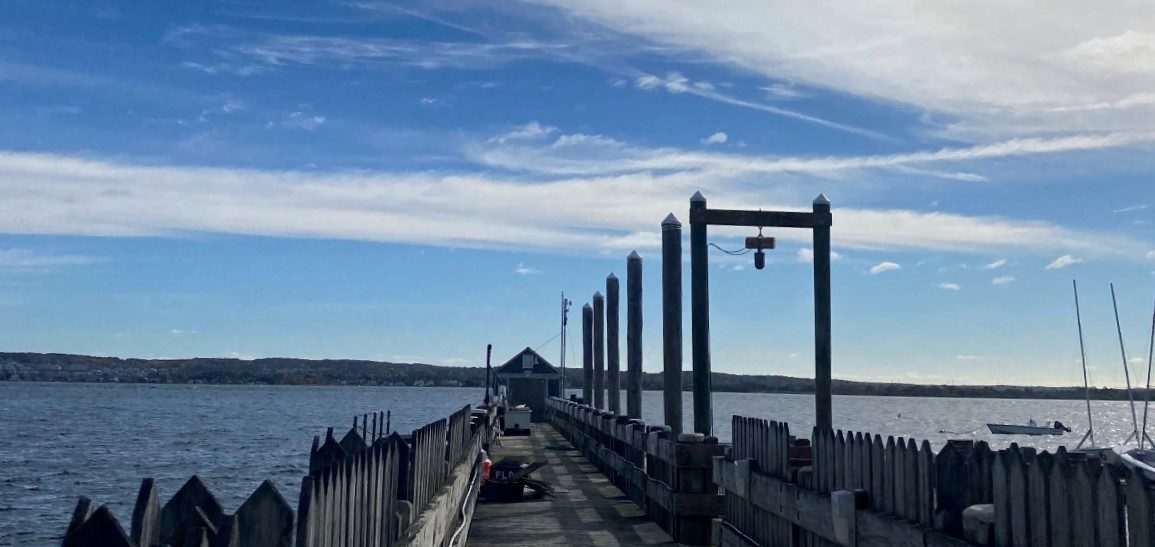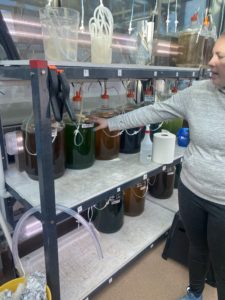Uncovering the Mollusk Mystery: Touring Roger Williams University’s Shellfish Program
- by Elise Dudley

On the edge of Roger Williams University’s campus and steps from Rhode Island’s Mt. Hope Bay, faculty, staff, and students are performing cutting-edge research on some truly amazing creatures. These invertebrates contribute to the formation of reefs, provide habitat for aquatic life, help to mitigate climate change, and are considered delicacies around the world.
These multi-talented creatures are shellfish – specifically oysters and clams – and at Rogers Williams’ Shellfish program, their hatchery, field research facility, and farm are leading the way in uncovering the myriad uses and benefits of these organisms.
This fall, Bon Appétit at Roger Williams Marketing Manager and Controller Stephanie Colliton and I had the privilege of going on a full tour of the program to learn about the fascinating and mysterious shellfish.
Upon entering the Marine and Natural Sciences (MNS) building, which houses a wet lab, aquatic diagnostic laboratory, and more, I met with Hatchery Manager Shawna Chamberlin. Here, Shawna raises clams and oysters in tanks from tiny, almost microscopic freely-moving larvae until they are too large to feed on algae. Shawna explained that algae production is critical to feed the clams and oysters she and the team raise. “We’re really algae farmers,” she laughed, and showed how different mixes of algae species are cultivated to meet the nutritional needs of different developmental stages of shellfish.

Hatchery Manager Shawna Chamberlin shows off the many types of algae used to feed larval shellfish.
Then, Stephanie and I walked over to the dock, just steps away from the MNS building, to meet with Research Associate/Shellfish Technician Susanna Osinski. Susanna showed me around and explained the process by which shellfish are moved to the nursery system on the dock. Once the shellfish make the journey to Susanna, they are kept in containers called upwellers, which pump in and circulate ocean water, providing food and promoting growth. After the baby shellfish become adolescents, they’re ready to be moved into the ocean for their final growth stage.
The visit provided valuable insight into some fascinating research and highlighted the beneficial role of shellfish in the environment. But beyond these learnings, I discovered just how important the program is to Roger Williams and the community writ large. The program holds an Applied Shellfish Farming course that is open to students and community members, providing the knowledge necessary to get started in this critically important business. And for existing shellfish farmers, the program acts as an extension service, providing resources throughout the shellfish lifecycle, from larvae to harvest.